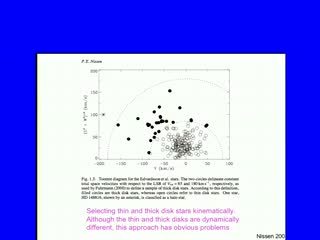The Galaxy, Stellar Compositions and Dynamics
International School on Chemical Abundances, Dynamics, Surveys, Numerical Simulations and Stellar Populations of the Milky Way. Tenerife, September 2 to 6, 2013.

Abstract
1- The use and abuse of N-body codes
- relaxation in spheres and disks, collective enhancement
- code structure, block time steps

Abstract
1- Fundamental stellar dynamics
- relaxation, collisionless dynamics
- distribution functions, Jeans eqs, etc.

Abstract
1- The basics
- overview of stellar evolution as a function of mass and metallicity
- from evolutionary tracks to isochrones
- quick overview of chemical changes at the stellar surface

Abstract
1- Overview of the structure of our Galaxy in the context of other galaxies
- the basic components
- dark matter properties
- general ideas about galaxy assembly

Abstract
2- Poisson solvers
- trees
- fixed and adaptive grids
- parallelization

Abstract
2- The thin disk.
- observational issues with the star formation history and the dynamical evolution of the thin disk.
- continuing gas accretion
- theoretical ideas about the formation and evolution of the thin disk.

Abstract
2- Stellar orbits and dynamical models
- orbits in various potentials, Jeans Thm, DF models, Schwarzschild, M2M

Abstract
2- More on isochrones
- bolometric corrections and Teff-color relations
- populating isochrones, and the IMF
- simulating star clusters
- simulating apparent and detached binaries
- simulating interacting binaries

Abstract
1- Astrometry and photometry
- Hipparcos, Gaia, full-sky and large-area photometric surveys
- fitting models to data
- algorithms and tools

Abstract
3- Setting up equilibrium models
- choosing from a DF, Jeans equations and their limitations
- disk-bulge-halo models

Abstract
3- The thick disk in the context of other disk galaxies
- systematics of thick disks in other galaxies
- chemical, structural and dynamical properties of the Galactic thick disk
- ideas about how thick disks form

Abstract
3- Galactic disk dynamics

Abstract
3- From star clusters to external galaxies
- basic methods
- age and metallicity distribution functions for different stars,
including main sequence, red clump, RGB, AGB

Abstract
4- Analysis "on the fly"
- code testing
- made-to-measure

Abstract
4- The stellar halo of the Galaxy
- more on dark matter in the Galaxy
- chemical tagging and reconstructing the star formation history of the Galactic disk.

Abstract
4- The Galactic bulge
- structure
- dynamics
- origin

Abstract
4- From external galaxies to the Milky Way
- basic equation of stellar statistics, computational methods
- overview of available MW codes
- expected populations X photometric depth and galactic coordinates

Abstract
2- Spectra
- APOGEE, RAVE, SDSS/SEGUE/BOSS, Gaia-ESO
- Spectral classification
- radial velocities
- automated data analysis

Abstract
5- SPH basics
- numerical viscosity
- Kelvin-Helmholtz instabilities
- other problems and their amelioration

Abstract
5- The Galactic bulge
- observational status on bulge kinematics and chemical properties in the context of other bulges
- ideas about the formation of the bulge

Abstract
5- The Galactic halo
- mass, extent, shape
- substructure, inner/outer halo

Abstract
5- Some current problems and opportunities
- simulating kinematics
- simulating variables
- simulating non-solar scaled populations
- simulating rare and extreme populations (e.g. X-ray sources, PNe,
hot-WDs, AGB-manque', C stars, IR-emission by mass-losing stars)
- opportunities opened by asteroseismology

Abstract
3- Other spectroscopic surveys and analysis strategies
- eBOSS, BigBOSS, HETDEX, WEAVE, 4MOST
- data mashup: astrometry, photometry and spectroscopy together
- reconstructing the Galaxy
- 'observing' galaxy simulations
- discovery and follow-up of interesting/exotic targets: HVS, UMPS, CEMPS, RCrBs...
Próximas charlas
- EMO-1: Construyendo un observatorio caseroEnol Matilla BlancoFriday April 19, 2024 - 10:30 GMT+1 (Aula)








